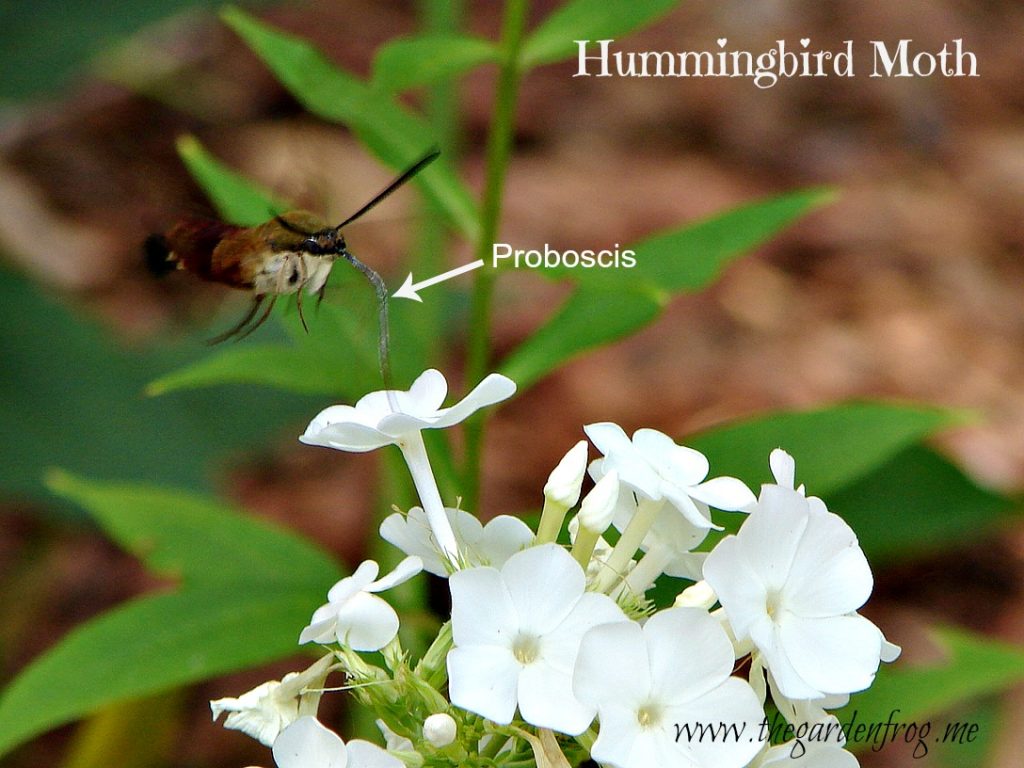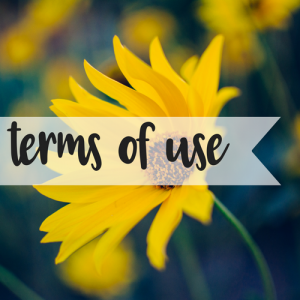 The Hummingbird Moth in the garden
The Hummingbird Moth in the garden
The Hummingbird Moth (Hemaris thysbe) is one of the coolest insects that will visit your garden. The Hummingbird Moth resembles the hummingbird and is sometimes mistaken because it hovers over and feeds on nectar of tubal plants such as Honeysuckle, Phlox, and BeeBalm just as a hummingbird does. The long proboscis unfolds to reach deep inside the flower and curls up when the moth is in flight. Unlike the hummingbird, the Hummingbird Moth does not have feathers and is not a bird even though the tail of the Hummingbird Moth looks like it has small delicate tail feathers.
 I get so overjoyed when I see a Hummingbird Moth in my garden
I get so overjoyed when I see a Hummingbird Moth in my garden
I have watched the steady decline in the past 5 years since my neighbors hire one of those companies to spray for mosquitoes onto their yard, bushes, and even 30′ up into the mighty Oaks. The Hummingbird Moth lays it eggs on the host plants (for the caterpillars) such as Honeysuckle (including the invasive Japanese Honeysuckle), Viburnum, Hawthornes, Black Cherry, and Plum trees. After the eggs hatch and the caterpillars feed and grow into green horned worms, they inch along to the soil where they spin their cocoon, become a pupa and rest until it is time to emerge as the Hummingbird Moth. Here in zone 7, the Hummingbird Moth can lay 2 sets of eggs- first set anywhere from March- June and the 2nd set from August- October. In colder climates the Hummingbird Moth will lay its eggs anywhere from April- August. If it gets too late in the season, the pupa will not emerge into the beautiful Hummingbird Moth until the following spring.
 The Hummingbird Moth sips the nectar from many native bushes and flowers too. Wild blueberries, phlox, wild roses, wild blackberries, BlackEyed Susans, and the red clover found in outlying wooded areas and open areas are important food sources for many insects, wildlife, and birds. Even the invasive Japanese Honeysuckle is a food source for the Hummingbird Moth. If you want to attract these cool and interesting insects into your garden, then I would plant some garden phlox (paniculata), BlackEyed Susans, and even plant a Japanese Honeysuckle if you can take the time to keep it contained and not become too invasive in your yard. Note: in the pictures this is David’s phlox (Phlox paniculata ‘David’) which is a cultivar.
The Hummingbird Moth sips the nectar from many native bushes and flowers too. Wild blueberries, phlox, wild roses, wild blackberries, BlackEyed Susans, and the red clover found in outlying wooded areas and open areas are important food sources for many insects, wildlife, and birds. Even the invasive Japanese Honeysuckle is a food source for the Hummingbird Moth. If you want to attract these cool and interesting insects into your garden, then I would plant some garden phlox (paniculata), BlackEyed Susans, and even plant a Japanese Honeysuckle if you can take the time to keep it contained and not become too invasive in your yard. Note: in the pictures this is David’s phlox (Phlox paniculata ‘David’) which is a cultivar.
Gardening is not always about attracting human eyes and compliments. Attracting insects, birds, and furry creatures keeps your garden and our great planet alive. Do not panic just because a spider has created a web on your flowers or you find a weird looking caterpillar crawling on your petunias. Not everything in the garden is bad and most of it is good.
Let’s talk gardening
I hope I have inspired you to think outside the box and work more with nature to attract all kinds of creatures great and small. Thanks for stopping by!
Creating. Inspiring. Gardening without the rules!
2016 copyrighted material C Renee Fuller @The Garden Frog Boutique




I’ve never even heard of a hummingbird moth, that is pretty interesting to know. Thanks for sharing this infor. I will have to keep my eyes open for one. Have to get more flowers planted. Love your Phlox, I haven’t seen the white color Phlox before, I’ve only seen the bluish color.
DAvid Phlox was perennial of the year many years ago. Any phlox will attract the hummingbird moth and bird. thank you for stopping
Really lovely photos. I wish I had more insects in my gardens.
thank you! I wish I had more bees and butterflies
Fabulous photos! I love bugs BUT only from a distance!
Thank you!
I was walking my dogs one night and thought I saw a hummingbird in my neighbors plant. I wonder if it was a hummingbird moth. It seemed late in the evening for an actual hummingbird. I do not know the nocturnal wanderings of a hummingbird.
yes some do come out at night- they are the coolest!
Such a great post! I absolutely adore hummingbird moths. I’ve been reading about them for years, and was able to see my first one in my garden this summer! You took stunning shots. I can’t seem to ever capture these elusive winged wonders with my camera. They are very quick! 🙂
yes they are quick! I caught this one with my smartphone- a Samnsung 5 at the time! I love seeing them in my garden